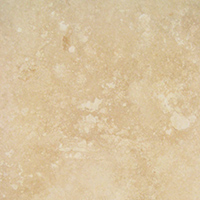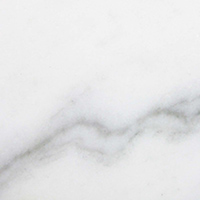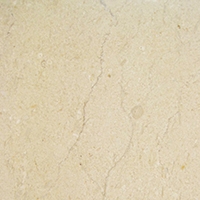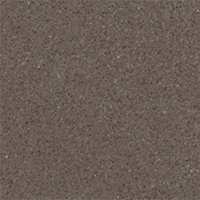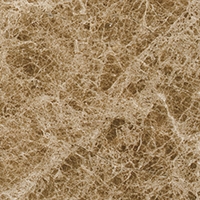 When choosing the right type of stone for your window sills and thresholds, it may get confusing to decipher which type of stone is the best one, much less explain it to your customers. After looking through wholesale catalogs, all of the materials can begin to look alike. Yet, when investing in top-quality window sills and thresholds, especially when buying in bulk, it is important to know what type of material you’re selling to your customers. For contractors, you need to know what type of material you are investing in for your building projects.
When choosing the right type of stone for your window sills and thresholds, it may get confusing to decipher which type of stone is the best one, much less explain it to your customers. After looking through wholesale catalogs, all of the materials can begin to look alike. Yet, when investing in top-quality window sills and thresholds, especially when buying in bulk, it is important to know what type of material you’re selling to your customers. For contractors, you need to know what type of material you are investing in for your building projects.
Stonexchange offers stylish alternatives to the tired aluminum, wood, concrete, ceramic, and laminate materials commonly used for window sills. We specialize in natural and engineered stone pieces that not only look great but can also last for decades with minimal maintenance. We are able to offer great wholesale pricing on our window sills thanks to our close partnerships with operators of overseas quarries.
The stone window sills in our catalog include:
* Carrara marble
* Crema Marfil marble
* Euro Beige marble
* Travertine
* Absolute Black granite
* Pure White Thazoz
The most popular stone among our clients is Carrara, which is not surprising. After all, this is the type of marble seen in many of the ruins of Ancient Rome. If you are working on a project that has Carrara marble flooring, choosing Carrara window sill pieces is highly recommended. Then we have the creamier Crema Marfil marble, which presents different veining patterns.
Many people confuse Crema Marfil with travertine, which we also offer. Let’s explore what each of these products is as well as their differences.
What is Crema Marfil?
When it comes to the natural stone industry, marble will always be in demand. Typically mistaken for marble because of its lustrous finish, Crema Marfil is actually derived from limestone that eventually turned into marble. Yet, it is referred to as marble because of the metamorphic process it undergoes once the limestone is exposed to immense pressure and heat within the earth. Once it cools, it reforms with other melted material within the earth that forms the substance we know as marble.
Crema Marfil gains its popularity based on its neutral look. Its earth-toned veining gives it an organic color that complements any décor. Because this is an organic rock extracted from quarries, this particular stone must take on different classifications.
Crema Marfil Classifications:
Color Tone – This is the most common classification as it comes in only two options: light or dark. This narrows down the options by 50% and can make the selection process that much easier.
Veining – The veins within Crema Marfil determine the overall tone of the material. Depending on where the rock was quarried, Crema Marfil can have high visibility of veining or very little. Additionally, the color tone can vary in these veins.
Variety of Grains – Because of Crema Marfil’s organic nature, grain classifications can also affect the look of the surface. Industry professionals refer to this as the “rice grain” variety, which is actually a fossil. Now, the variety of rice grains also comes in light and dark color tones, which is something else to consider when selecting Crema Marfil.
Water Variety – This is determined by the type of wave pattern that you want in your material. Once Crema Marfil is polished, the veining begins to take on a water-like pattern. Since veining is organic and it takes on a different look once polished, this water variety classification is incorporated.
Flower Type – Sometimes, CremaMarfil will have white spots about the size of a penny spread throughout the cut of marble. These spots can be dispersed evenly or inconsistently.
Finishing – This is probably one of the most recognizable classifications. Crema Marfil is widely coveted for its polished finish, but it can also be honed, hammered, or sanded for a rustic feel.
Depending on the type of wholesaler you choose, all of these classifications may not apply. StoneXchange representatives are more than happy to let you know about the characteristics in our current inventory of Crema Marfil marble.
What Is Travertine?
Travertine is a little different from marble because it is not a metamorphic rock. However, it is closely related to limestone since it is created in limestone caves and/or hot springs. Although marble is a porous material, travertine is even more visibly porous because of its reaction to carbon dioxide evasion. Like Crema Marfil, travertine also has types of classification, although it is categorized a little differently.
Grades Of Travertine
Travertine comes in two grades: A-Grade/Premium Grade, or commercial grade. Of course, the Premium Grade will cost more.
A-Grade or Premium Grade – This is determined by the holes in the stone. The fewer holes a slab of travertine has, the higher the grade.
Commercial Grade – The commercial-grade will have a more sponge-like look to it. Consequently, this will cost less than the A-Grade.
Types Of Travertine
A great benefit to travertine is that it can be utilized for indoor and outdoor use. This works perfect for decorative window sills and especially beneficial for outdoor patio doors. There are two types of travertine, and it’s important to know which is good for indoors and outdoors.
Tiles – These are best used for indoor use, such as thresholds, decorative window sills, soap shelves, and shower caddies.
Pavers – This type is recommended for outdoor use, such as enhancing the curb appeal of your home or business with fancy eye-catching window sills and durable thresholds for high traffic entryways.
Color Variations
Unlike Crema Marfil, Travertine comes in a variety of colors. It probably goes without saying that the most popular colors are the neutral ones: creamy white, ivory, and beige. Yet, they also come in rustic reds, rich brown coffee shades, walnut and honey shades, and even silvery greens! With all of these colorful options, think of what beautiful window sills you can provide to your customers.
Natural Stone Surface Finishes
Finishes are an easy classification and usually the catalyst in determining what kind of material a builder or contractor may need for their project. Here are the options for travertine finishes:
Tumbled – This is considered the most natural finish as it has no shine and the edges are a bit smoother as if they are worn in appearance.
Polished – The polished look gives a smooth, shiny look that is very similar to marble. It is the most common finish.
Brushed –This has a rough texture giving an antique look.
Honed – A honed finish gives a matte appearance, taking away a little bit of the gloss from the surface.
When we cut, bevel, and finish window sill pieces, we apply the honed and polished look prior to impregnating the stone with a surface sealant. You can never go wrong with a honed and polished finish on window sills because you always want sunlight to reflect.
Get to Know the Stonexchange Difference
Stonexchange can help you determine the differences between types of stones for your window sill and threshold projects. This will allow you to educate your clients as well.
Our company works with nationwide shippers to provide you with timely deliveries and dependable service. When you are ready to stock your inventory with an excellent window sill and threshold materials, get in touch with our office and let us help you place an order.

